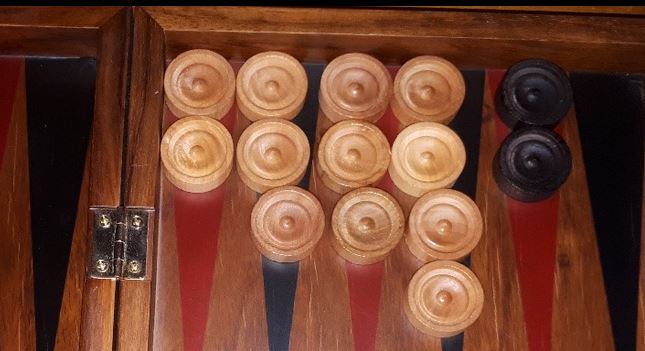Last updated on October 30, 2022
There are many strategic elements involved in the game of backgammon. In this Deluxe Backgammon post, we will take a look at the concept of timing and how it can affect decision making during play. Timing refers to whether a player’s position is likely to improve or disintegrate over time. It most commonly refers to being behind in the race when a player would like to maintain a prime without crunching while waiting for an opportunity to hit.
Concept
In other words, when we talk about timing, we refer to how long a player can maintain their current position in the game. Any game plan that involves building a prime or maintaining an anchor will definitely require timing as a consideration of that strategy. For example, establishing a six-prime is extremely useful as it forms an impassable blockade. However, you need to be able to have pieces in reserve to maintain the position long enough to trap your opponent behind it. You need to have enough checkers in your outer board to absorb the rolls until your opponent is trapped. Without these pieces, you may be forced to crunch your position by breaking down your prime.
Timing is concerned with maintaining a favourable position for as long as possible. The backgammon player who is able to maintain their better position for the most turns has an advantage over their opponent. This is because that player will have more time to execute their chosen strategy.
Examples
Let’s take a look at a Deluxe Backgammon example of timing. Imagine a prime versus prime situation. Both players are trying to maintain an impassable blockade for long enough to hit a loose checker. In most cases, the player who is forced to give up their prime first will lose the advantage and most likely suffer defeat. Another example could be where you are playing a back game and you are forced to break up the anchor you hold in your opponent’s home board.
In both of the examples above, the player that has the better timing will hold the overall advantage because they are able to maintain their favourable position for that little bit longer. So, timing should be something to take into consideration when executing a specific strategy. Building a prime has a great strategic advantage, but it is only truly effective if you can maintain the position for long enough to trap your opponent’s checkers. If you don’t have sufficient reserves to preserve the prime you will quickly lose the advantage as you crunch your home board.
Considerations
How do we take backgammon timing into consideration? When considering your options, exclude the checkers you want to maintain from your pip count. As the pip count drops, so does the flexibility and the timing of the position. A low number will mean you have fewer options and therefore the likelihood of breaking the favourable position increases. A pip count of 20 or 30+ will likely give you enough flexibility to maintain your timing for a roll or two. If the pip count is lower, you may want to consider changing your strategy and you are likely to be forced to break up your position. In addition, always remember to take your opponent’s pip count into consideration as well. If their pip count is lower than yours, you are likely to be able to hold your position slightly longer.
Timing becomes critical for certain strategies in backgammon, particularly for prime vs prime and back games. When both backgammon players have set up primes or anchors, the player who gives up the strategic position first usually suffers a loss. If your current backgammon strategy requires maintaining a specific position, then timing is a crucial element of your decision-making process.
Backgammon rules are available on this link.



Timing is an interesting concept in backgammon. Especially if you haven’t broken contact, when the game becomes a race. Any chance of a hit changes the game. Having even numbers of checkers on the outer points helps maintain timing. Ultimately, in backgammon, it can simply come to the luck of the dice. Thanks for the great backgammon playing guides!